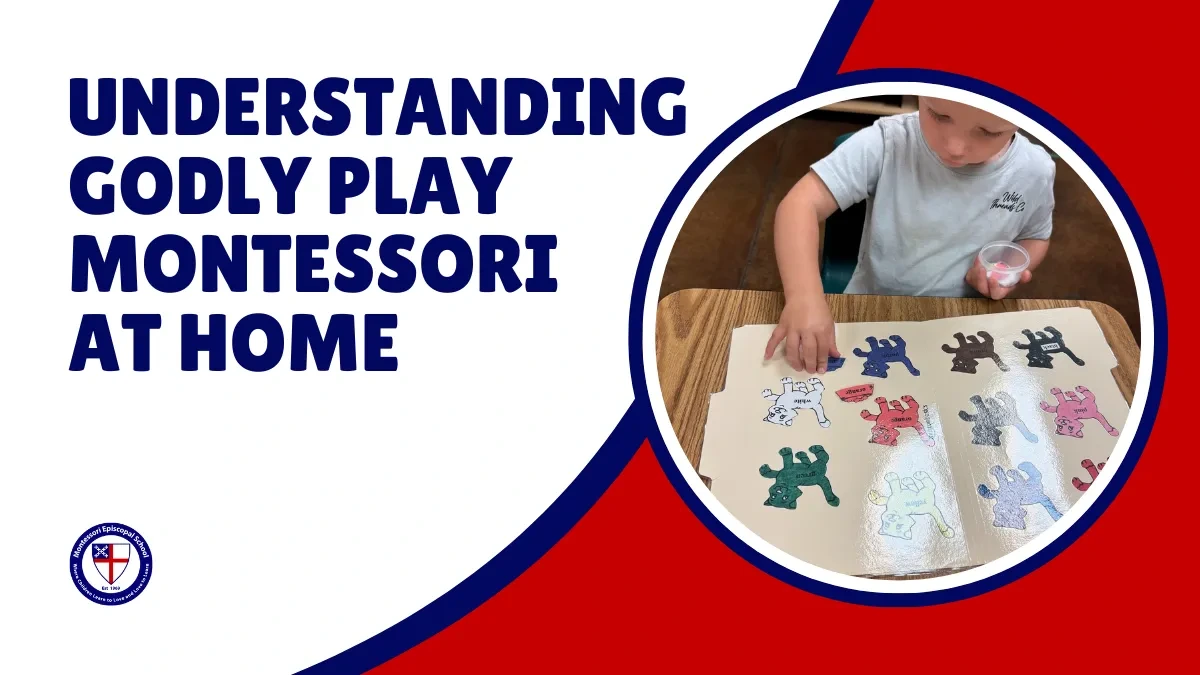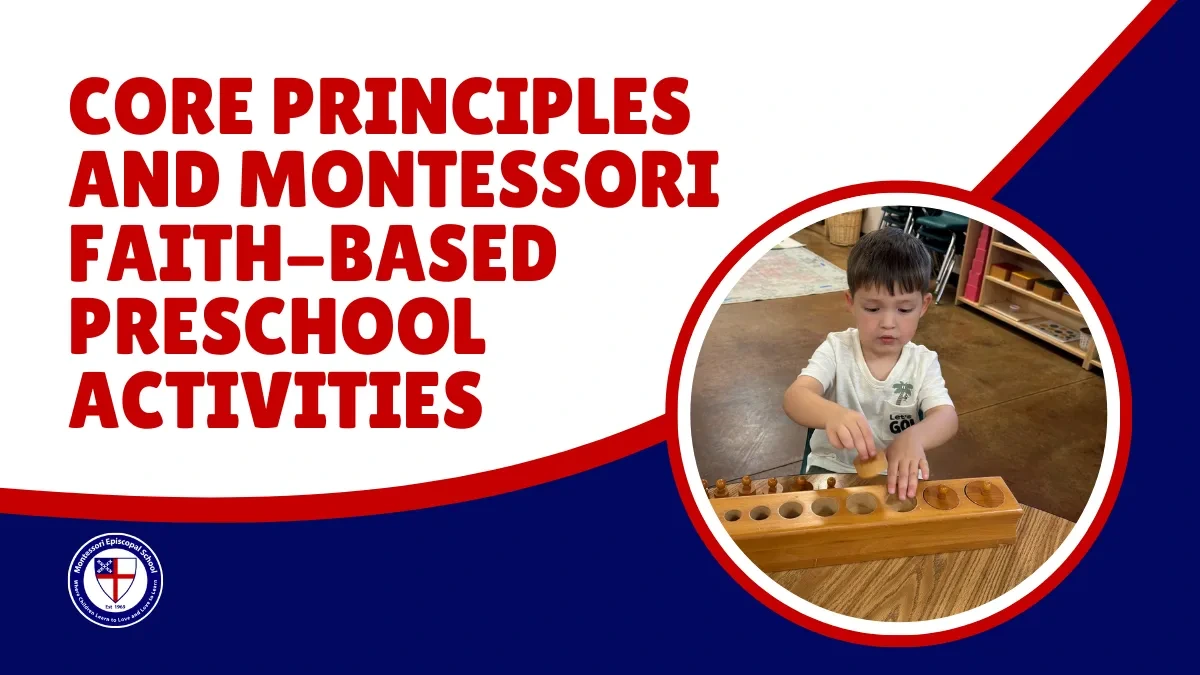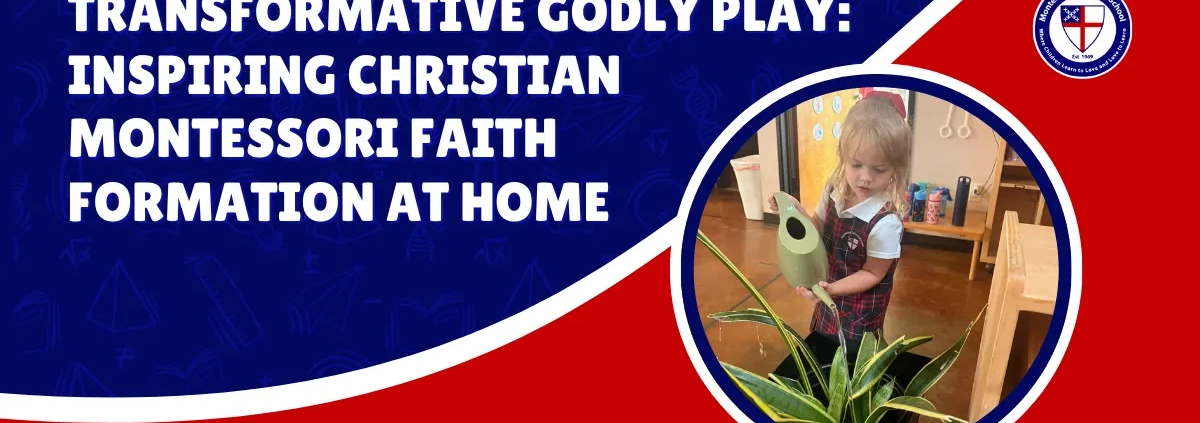Transformative Godly Play: Inspiring Christian Montessori Faith Formation At Home
Christian Montessori Godly Play activities create a gentle, structured path for faith formation at home. Rooted in Montessori principles, Godly Play invites children to encounter Scripture through tactile materials, purposeful movement, and contemplative silence. A prepared environment—small mat or prayer table, simple figures, and a designated quiet space—supports concentration and reverence.
Storytelling with precise, liturgical language encourages wonder, while open-ended work allows children to revisit narratives, sequence events, and express understanding through art or practical life tasks. Regular rhythms, such as lighting a candle, singing a short hymn, and closing with gratitude, cultivate peace and attentiveness. This approach nurtures independence, biblical literacy, and joyful discipleship.
UnderstandingGodly Play Montessori at Home

Godly Play is a contemplative, story-centered approach that aligns seamlessly with Montessori principles, making Godly Play Montessori at home a natural extension of a child’s formation. Children encounter Scripture through tactile materials, ordered spaces, purposeful movement, and silence in a prepared environment. The aim is to nurture interior stillness, a living relationship with God, and practical habits of worship that children can carry into daily life.
Purpose and Outcomes
A home practice of Godly Play supports:
-
Spiritual dispositions: peace, gratitude, attentiveness, and wonder.
-
Biblical imagination: recalling, sequencing, and internalizing sacred stories.
-
Independence and choice: self-directed work with clear boundaries.
-
Liturgical awareness: recognition of seasons, symbols, and sacred time.
-
Care for community and creation: grace, courtesy, and materials stewardship.
Role of the Adult Guide
The adult is a calm, observant catechist who prepares the space and protects concentration. Responsibilities include:
-
Preparing a simple prayer table and accessible shelves.
-
Presenting stories using precise, minimal language and measured movement.
-
Asking open “wondering” questions that invite reflection rather than recitation.
-
Modeling grace and courtesy; intervening lightly and only when necessary.
-
Observing to understand readiness, interests, and next steps.
Child-Led Discovery, Silence, and Reverence
Godly Play honors the child’s inner work. Silence is cultivated through slow storytelling, gentle transitions, and unobtrusive guidance. Reverence emerges as children carefully handle materials, return items to order, and participate in brief rituals such as lighting a candle, singing a short hymn, or offering a simple prayer. These rhythms communicate that the space—and the child’s work within it—are sacred.
Developmentally Aligned Story Choices
Material choices should match attention span and cognitive readiness:
-
Toddlers (9–18 months): sensorial trays, short blessings, simple creation, or “Good Shepherd” images.
-
Preschool (3–6 years): sacred stories (Creation, Exodus), parables, and basic liturgical lessons with color cards.
-
Early Elementary (6–7 years): deeper wondering, extension work (journaling, labeling, timelines), and service-oriented responses.
Godly Play at home becomes a quiet framework where children meet Scripture, practice worship, and grow in freedom and love by uniting ordered spaces, humble storytelling, and open-ended response.
Core Principles and Montessori Faith-Based Preschool Activities

At the core of Montessori faith-based preschool activities, Godly Play brings Scripture into an ordered environment where children experience silence, beauty, and purposeful work. These principles translate into consistent routines that allow faith to take root through independence, repetition, and reverence.
Story–Wonder–Response Sequence
Each session follows a simple arc that honors the child’s interior work.
-
Story: A sacred narrative is presented with measured movement and precise language. The focus is on clarity, economy of words, and symbolic action.
-
Wonder: Open questions invite reflection—“I wonder where you are in this story.” They prompt personal connection rather than recitation.
-
Response: Children choose independent work to deepen understanding. Examples include retelling with figures, sequencing picture cards, drawing or painting key moments, building simple scenes, or quietly holding a symbol while reflecting.
Practical Life as Worship
-
Practical life exercises become acts of prayer and stewardship.
-
Flower arranging for the prayer table cultivates order, beauty, and care for creation.
-
Cloth care (folding altar cloths by color/season) strengthens coordination and introduces liturgical rhythms.
-
Dusting and wood polishing for shelves, crosses, or figure models, in reverence for sacred objects.
-
Candle protocols (snuffers, polishing holders, or placing LED candles) teach safety and attentiveness.
-
Grace, before snacking and sharing the cleanup, reinforces gratitude and service.
Grace and Courtesy in a Faith Context
Social virtues are practiced as spiritual habits.
-
Greeting with eye contact and a soft voice, offering the sign of peace, and waiting one’s turn at the shelf.
-
Carrying materials with two hands, walking carefully on the line, and restoring each tray to order.
-
Simple blessings for peers or a quiet “thank you” to the storyteller foster community and respect.
Sensorial Invitations to Scripture
Sensorial pathways lead children into contemplation.
-
Touch: sand in the desert box, smooth wood figures, textured altar cloths.
-
Sight: liturgical color cards and uncluttered displays that guide focus.
-
Sound: a bell to signal transitions, brief hymns, or psalms.
-
Smell: natural beeswax or flowers on the prayer table to mark sacred time.
Together, these principles establish a predictable, peaceful framework where children meet Scripture, practice worship through meaningful work, and develop lasting habits of faith.
Essential Christian Montessori Spiritual Learning Tools
A thoughtful set of Christian Montessori spiritual learning tools supports quiet focus, meaningful repetition, and reverent engagement with Scripture. Choose durable, beautiful items, present them, and keep everything accessible on low shelves for independent use.
Prayer Table and Sacred Space
The prayer table anchors the environment and signals sacred time.
-
Core items: child-sized Bible, small cross, candle or LED candle, and a simple icon or sacred image.
-
Supports for order: a plain cloth, a small tray for matches or a snuffer, and a basket for prayer cards.
-
Ritual cues: a bell for beginning and ending; a small vase for a single flower.
Liturgical Colors and Visual Catechesis
Color and symbol gently teach the rhythm of the Church year.
-
Altar cloths or runners: purple (Advent/Lent), white (Christmas/Easter), green (Ordinary Time), red (Pentecost/feasts).
-
Season cards: small images or labels that pair color with key feasts to reinforce sequence and meaning.
-
Storage: labeled pouches or envelopes so children can rotate clothes with care.
Sacred Story and Parable Materials
Hands-on storytelling materials invite contemplation and recall.
-
Desert box: a shallow tray with clean sand for wilderness narratives and movement paths.
-
Figures and props: smooth wood pieces for Creation, Exodus, the Good Shepherd, the Nativity, and selected parables.
-
Story baskets: each set kept together with a title card and brief presentation notes for the guide.
Practical Life as Worship
Practical life tools become quiet acts of stewardship.
-
Care of space: a small duster, wood polish cloth, and a tray for cleaning the cross or figures.
-
Textile work: folding altar cloths by color; rolling mats; gentle handwashing station with bowl and towel.
-
Candle protocol: snuffer, holder, and polishing cloth to model safety and reverence.
Shelving, Trays, and Rotation
Order communicates respect and supports concentration.
-
Open shelves: low, uncluttered, with each material on a tray for easy carrying.
-
Clear sequence: left-to-right arrangement of story sets; matching color dots or symbols to guide return.
-
Rotation rhythm: maintain a small, complete selection; rotate seasonally and in response to observed interest.
Together, these tools create a stable, beautiful framework in which children carefully handle sacred objects, enter stories through touch and movement, and practice worship through purposeful work.
Preparing the Home Environment and Session Flow
A simple, beautiful environment and a predictable session rhythm support concentration, reverence, and independence. Order, silence, and accessibility allow children to enter Scripture with calm attention and meaningful work.
Quiet, Ordered Space With Accessible Materials
Designate a small corner for sacred work.
-
Place a child-height prayer table with a Bible, a cross, a candle, or an LED candle.
-
Use low, open shelves; present each material on a tray for easy carrying.
-
Keep the visual field uncluttered; limit choices to complete, well-maintained sets.
-
Provide floor mats or a small rug to define work areas and protect materials.
-
Offer gentle cues for transitions, such as a bell and a brief silence.
-
Ensure natural light if possible; add a single flower or plant to signal beauty and care.
Step-by-Step Session: Gathering, Storytelling, Wondering, Work Time, Closing
A consistent sequence nourishes attention and peace.
-
Gathering: Children enter quietly, choose a mat, and prepare hands and heart through a short silence or hymn.
-
Storytelling: The guide presents one sacred story with measured movement and precise language, naming key symbols without embellishment.
-
Wondering: Open questions invite reflection and personal connection: “I wonder what part of the story is most important.”
-
Work Time: Children select independent responses, such as retelling with figures, sequencing images, drawing, copying a verse, polishing a cross, or arranging flowers for the prayer table.
-
Closing: Materials are restored to order; a brief thanksgiving prayer is offered; the candle is extinguished, and the space is left ready for the next time.
Safety, Material Rotation, and Care Routines
Clear procedures communicate respect and protect focus.
-
Supervise any flame; prefer LED candles for independent use.
-
Select materials sized to avoid choking hazards; inspect pieces regularly for wear.
-
Teach grace and courtesy: carry trays with two hands, walk slowly, and return items completely.
-
Clean and repair weekly; keep simple checklists for inventory and readiness.
-
Rotate materials seasonally and by observed interest; align cloth colors and cards with the church year.
-
Maintain brief observation notes to guide future presentations and extensions.
-
Define zones or stagger presentations for siblings or mixed ages to safeguard concentration.
-
Keep sessions unhurried; end while interest is sustained, preserving anticipation for next time.
This environment and flow cultivate steady prayer habits, careful movement, and joyful, self-directed engagement with Scripture.
Conclusion
A home practice of Godly Play within a Montessori framework forms a steady path for prayer, Scripture, and service. When children meet sacred stories in an ordered space—moving slowly, wondering freely, and choosing meaningful work—they cultivate peace, attentiveness, and gratitude. Practical life becomes worship through care of materials and simple rituals; sensorial tools and liturgical colors connect faith to the seasons of the Church; observation and gentle guidance safeguard concentration and independence. Over time, these quiet habits nurture biblical imagination and awareness of God’s presence in daily life.
For guidance on beginning or deepening Godly Play at home, contact our team at (972) 895-9050 or visit https://montessoriepiscopal.com/contact/.




Leave a Reply
Want to join the discussion?Feel free to contribute!